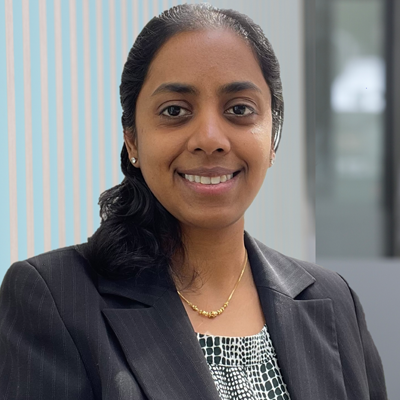Q1. What are the biggest challenges organizations face when it comes to balancing the benefits of containerization and cloud-native architectures with the security measures needed to mitigate evolving risks?
The power of cloud is clear but comes with new challenges. Organizations should think differently from traditional EPP/EDR and forensic playbooks. Here are the challenges:
Granularity of visibility and detection coverage
Vulnerability scanning of the underlying OS and packages is often the first step taken to secure environments. The perceived risk can be daunting and inaccurate. Teams need to understand what packages are actually in-use and prioritize remediations for the most relevant threats. This is modern attack surface management. Next, consider the configuration of the deployments. Not only is it the configuration of the cloud resources, containers, and clusters, but also identities and permissions.
Logs are crucial in cloud. Many services and components only offer telemetry as logs, such as services for IAM, MFA, control plane APIs for PaaS, and serverless workloads. However, logs may not contain exactly what was accessed or executed in serverless functions. Attackers target serverless to find credentials and other data. Looking at logs in isolation and reviewing periodically isn’t enough. The fast analysis of logs and ability to correlate log data with other data sources like runtime security events can be the difference between early detection and a breach.
Everyone wishes cloud and application logs are enough; however, you need an agent for the granularity and correlation required for proper detection.
Investigation and forensics
During an incident, an alert or few security events are not satisfactory to resolve its full scope. In a traditional enterprise, the impacted devices still exist and can be interrogated or forensically examined. With cloud-native architectures, this isn’t the case. Organizations must acknowledge the temporal nature of containers, and the relationship between containers and to their hosts when resolving an incident. Scanning base container images pre-deployment is necessary but not sufficient. Recording runtime container activity enables forensic investigation after a container is gone but requires cloud-native tooling. Disk and memory detection is powerful in container security, as with enterprise security, but this visibility is difficult to gain.
In cloud, all the interconnected pieces from source code repositories, image registries, CI/CD pipelines, admission controllers, configurations, and the identity management for those things to interact become crucial to the investigation. A simple mistake in one can lead to total compromise.
Response and remediation
Traditional EPP/EDR response playbooks include quarantining an endpoint, killing processes, and deleting files. Playbooks change in cloud-native settings. Quarantining a container won’t help if there are thousands of copies running. The response needs to remediate the vulnerability in the container base image or the application code. Killing a container is less useful if your cloud orchestration service is going to restart it with the same flaw present.
Q2. When looking at the current and emerging threat landscape, what trend concerns you the most? What kind of changes should organizations be making to their security posture to prepare for it?
The traditional security approach involves looking in from the outside. As cloud architectures and containers become commonplace, this paradigm needs to change. Remote code exploits will always be a serious threat, but the amount available is decreasing and their value is increasing. The attack surface is changing, with DevOps pipelines and other cloud services making up more of an organization's operations.
Attackers are becoming more profit focused and taking advantage of cloud innovations. Cryptocurrencies were a boon to attackers as they enabled a simpler and safer way to conduct transactions and leverage their compromised assets at massive scale. Cryptojacking is popular because it generates money without the risk involved in attacks like ransomware.
The evolving technology landscape increasingly leads attackers to approach targets from different angles, like the software supply chain. Modern architectures are built upon layers of different software packages, many of which may not be under your direct control. SolarWinds and Log4j are the most famous examples, but open source projects are being increasingly targeted. Organizations will need to increase their awareness of what software is being used in their stack and if it holds malicious artifacts. This requires both static and runtime inspection to detect.
The most concerning is that attackers are getting much more skilled in understanding weaknesses in over-permissive configurations and how they relate to different resources, and their speed from initial discovery to full compromise is increasing. Cloud-savvy attackers will drive new approaches to risk management.
Q3. What can customers at Black Hat USA 2023 expect from Sysdig in terms of product demonstrations, discussions on emerging threats, educational sessions etc., at the event?
Sysdig will be at booth 1350. You should stop by to discuss these things with me and the team. Being rooted in runtime, Sysdig’s differentiator is the insight we get from production environments that enables real-time end-to-end cloud security. I also think it’s great that the Sysidg Threat Research Team will be in booth discussing their latest cloud research, the attack patterns they are discovering in the wild, and how you should prepare your team for a new wave of cloud threats. They would be happy to chat about the challenges or unknowns you are experiencing. Think you’re a threat detection expert? You can also test your knowledge and win cool prizes with our threat simulator.
I mentioned the overwhelming noise from vulnerabilities and the lack of visibility developers have into their environment. Our engineers will be in the booth giving Sysdig demos and talking through best practices. In case you didn’t know, Sysdig created open source Falco, the runtime cloud security tool with more than 60 million downloads. The creators of Falco will be on site, as well as our open source team, talking about how to roll your own runtime security, if that is more your pace.
We also have several talks, on stage and in our booth. We are still waiting on the schedule, but I know my colleague, Anna Belak, a former Gartner Analyst and now the Director of our Office of Cybersecurity Strategy, will be talking about the past, present, and future of cloud security, including the impending need for consolidation.
The Sysdig social media channels will highlight all of our activities at Black Hat, so be sure to follow on Twitter and LinkedIn to get the latest.








